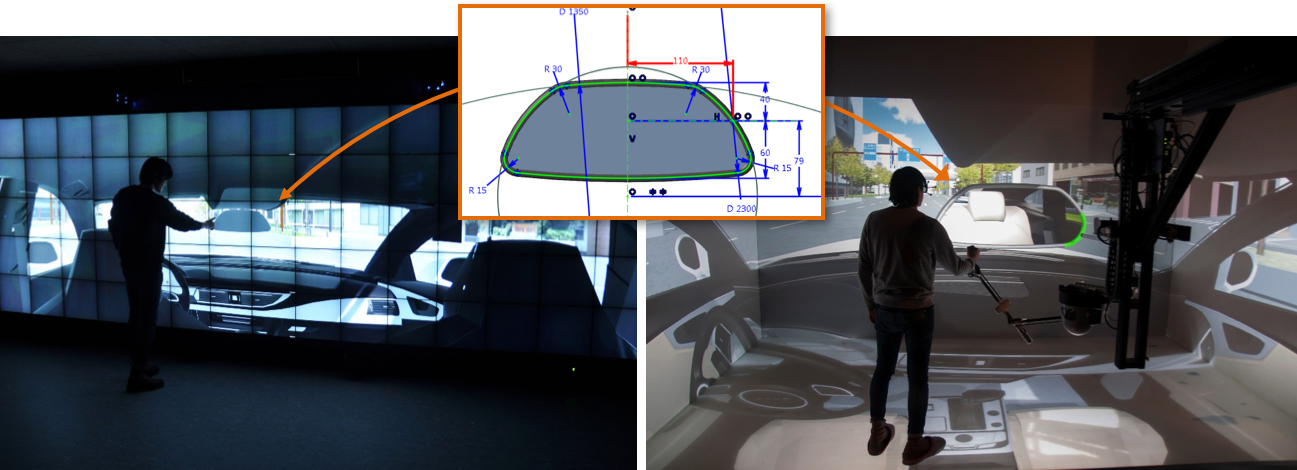Section: New Results
Collaboration
Participants : Cédric Fleury [correspondant] , Michel Beaudouin-Lafon, Wendy Mackay, Carla Griggio, Yujiro Okuya.
ExSitu is interested in exploring new ways of supporting collaborative interaction and remote communication. We investigated how large interactive spaces such as wall-sized displays or immersive virtual reality systems can foster collaboration in both co-located and remote situations in the context of Digiscope (http://digiscope.fr/). We also conducted in-depth studies to better understand communication through social networks.
|
Remote users can have significantly different display and interaction capabilities, such as a wall-size display v.s. an immersive CAVE. We started to explore how such asymmetric interaction capabilities provide interesting opportunities for new collaboration strategies. In particular, we developed a distributed architecture allowing the collaborative modifications of CAD data across heterogeneous platforms [27] and tested it between the EVE and WILDER platforms of Digiscope (CAVE vs. wall-sized touch display – Figure 7).
Remote collaboration across large interactive spaces also requires telepresence systems which support audio-video communication among users as they move in front of the display or inside of the immersive virtual reality system. We have added 3D audio to improve spatial awareness of remote users [26]: 3D audio lets us position a sound source for each remote participant at the virtual position occupied by this participant in the local space. When using video as well as audio, this lets us position the audio feed so that it is congruent with the position of the video feed.
Finally, we conducted an in-depth study of how users communicate via multiple social network apps that offer almost identical functionality. We studied how and why users distribute their contacts within their app ecosystem. We found that users appropriate the features and technical constraints of their apps to create idiosyncratic “communication places”, each with its own recursively defined membership rules, perceived purposes, and emotional connotations. Users also shift the boundaries of their communication places to accommodate changes in their contacts’ behavior, the dynamics of their relationships, and the restrictions of the technology. We argue that communication apps should support creating multiple “communication places” within the same app, relocating conversations across apps, and accessing functionality from other apps. Carla Griggio, supervised by Wendy Mackay, successfully defended her Ph.D. thesis Designing for Ecosystems of Communication Apps [33] on this topic.



